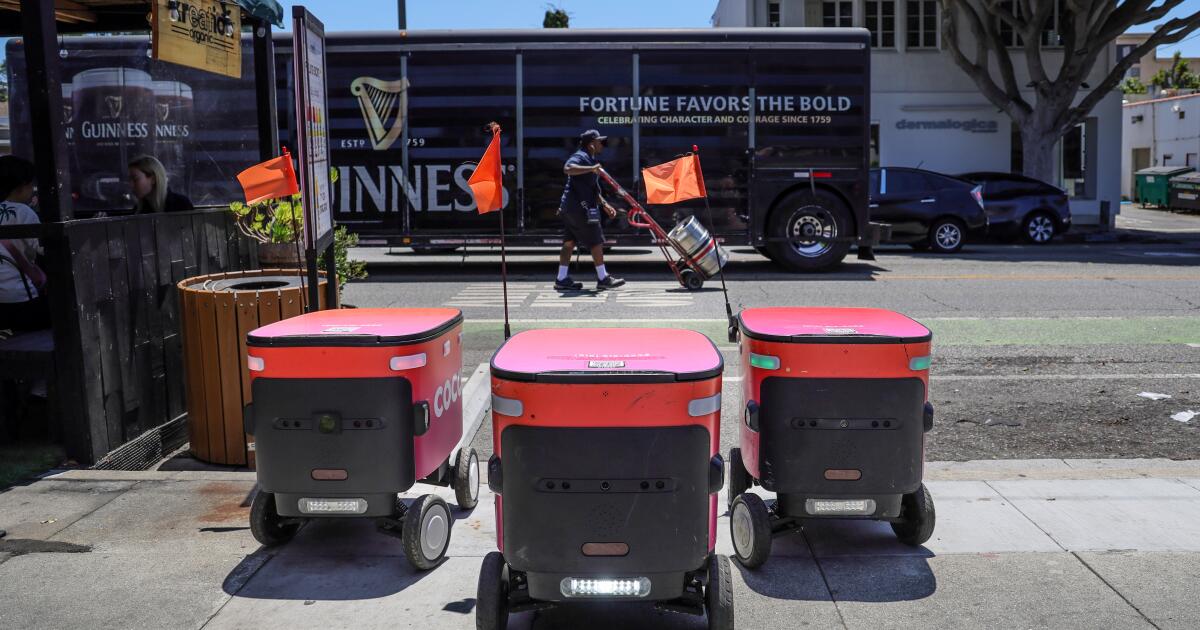DEE ANN DURBIN
More than 1,000 unionized Starbucks workers went on strike at 65 U.S. stores on Thursday to protest a lack of progress in labor negotiations with the company.
The strike was aimed at disrupting Starbucks' Red Cup Day, which is typically one of the busiest days of the year for the company. Since 2018, Starbucks has been giving away a free reusable cup daily to customers who purchase a holiday drink. Starbucks Workers United, the union representing baristas, said Thursday morning that the strike had already closed some stores and was expected to close more later that day.
Starbucks Workers United said it would affect stores in 45 cities, including New York, Philadelphia, Minneapolis, San Diego, St. Louis, Dallas, Columbus, Ohio and Starbucks' hometown of Seattle. There is no set end date for the strike, and more stores are prepared to join if Starbucks does not reach a contractual agreement with the union, organizers said.
Starbucks stressed that the vast majority of its U.S. stores will be open and operating as usual on Thursday. The coffee giant has 10,000 company-owned stores in the United States, as well as 7,000 licensed locations in places such as supermarkets and airports.
About 550 company-owned Starbucks stores in the United States are currently unionized. Many voted to unionize, but Starbucks closed 59 unionized stores in September as part of a broader turnaround campaign.
This is what is behind the strike.
Stalled contractual agreement
The striking workers say they are protesting because Starbucks has not yet reached a contract agreement with the union. Starbucks workers voted to unionize for the first time at a Buffalo store in 2021. In December 2023, Starbucks promised to complete the agreement by the end of 2024. But last August the company fired Laxman Narasimhan, the CEO who made that promise.
The union stressed that progress has stalled under Brian Niccol, the company's current president and CEO. The two sides have not sat at the negotiating table since April.
Workers want better wages and hours
Workers say they want better hours and better staff at stores where they say long wait times for customers are common. They also want higher salaries, noting that executives like Niccol earn millions of dollars and that in June the company spent $81 million on a conference in Las Vegas for 14,000 store managers and regional leaders.
Dochi Spoltore, a Pittsburgh barista, said at a union conference Thursday that it is difficult for workers to work more than 19 hours a week, leaving them short of the 20 hours needed to qualify for Starbucks benefits. Spoltore said he makes $16 an hour.
“I want Starbucks to succeed. My livelihood depends on it,” Spoltore said. “We are proud of our work, but we are tired of being treated like disposable people.”
The union also wants the company to resolve hundreds of unfair labor practice charges brought by workers who claim the company fired baristas in retaliation for unionizing and failed to negotiate policy changes that workers must enforce, such as a decision earlier this year to limit restroom use to paying customers.
Starbucks defends its salaries and benefits
Starbucks claims to offer the best benefits and compensation package in retail, averaging $30 an hour. Company benefits include up to 18 weeks of paid family leave and full tuition for a four-year college degree. In a letter to employees last week, Starbucks general partner Sarah Kelly said the union walked away from the bargaining table in the spring.
Kelly added that some of the union's proposals would significantly disrupt Starbucks, such as giving workers the ability to turn off mobile ordering if there are more than five orders in a store's queue.
Kelly said Starbucks remains open to dialogue and “believes we can quickly come to a reasonable agreement.” He added that surveys have shown that most employees enjoy working for the company, and barista turnover is half the industry average.
Restricted areas with high visibility
Union workers have already gone on strike at Starbucks. In 2022 and 2023, workers walked off the job on Red Cup Day. Last year, a five-day strike before Christmas closed 59 stores in the United States. Each time, Starbucks said the disruption to its operations was minimal. Starbucks Workers United clarified that the new strike is indefinite and could spread to many other places where unions operate.
The number of non-union Starbucks locations far outnumbers the number of unionized locations. But Todd Vachon, a union expert at Rutgers School of Management and Labor Relations, said any strike could be highly visible and inform the public about barista concerns.
Unlike manufacturers, Vachon said, retail industries depend on connections between employees and customers. That makes shame a potentially powerful weapon in a union's arsenal, he said.
Improved sales
Starbucks same-store sales, or at locations open at least a year, rose 1% between July and September. For the first time in almost two years, the company reported growth. In his first year with the company, Niccol set new standards for hospitality, redesigned stores to make them more welcoming, and adjusted staffing levels to better handle rush hour operations.
Starbucks is also trying to prioritize in-store orders over mobile orders. Last week, the holiday drinks company's US launch was so successful that its Bearista glass sold out almost immediately. Starbucks said demand for the cup has exceeded its expectations, but won't say whether the Bearista will return before the holidays are over.
___
This story was translated from English by an AP editor using a generative artificial intelligence tool.








